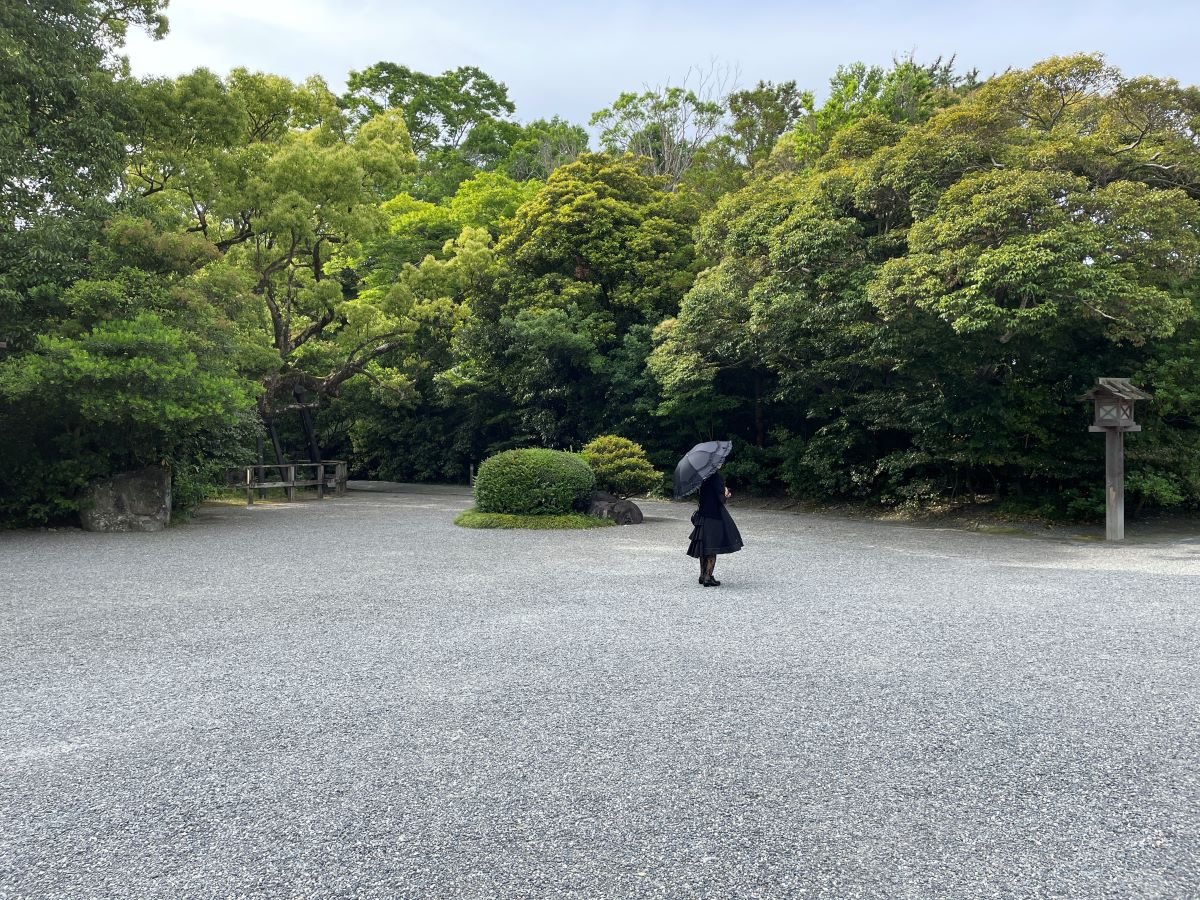Ise-Shima
This post is part of a series on my trip to Japan.
DAY 3
We took the train to Ise-Shima, and from the train station, a private bus the rest of the way. We had a beautiful lunch at Ise Todaya Ryoan, which we found out upon leaving had a Michelin star!
We first visited a netsuke shop. A netsuke is a small wooden object to which a purse string is tied, and it allows the purse to be fastened to a kimono belt (kimonos don’t have pockets). Netsukes can take any shape, and it takes anywhere between a day and a few weeks to carve one, depending on how intricate you want it to be. There was an apprentice there who had been learning for 6 months, on a government grant. The top netsuke carver was truly a master of his craft!
Our second stop was to Futami Okitama Shrine. It is famous for a pair of rocks said to be the Wedded Rocks. The rope stretching between the rocks represents a gateway, and the whole thing faces East, so that in summer, the sun rises between the rocks. This location is also a traditional purification stop before visiting Ise Shrine, which was our next destination. There are a lot of frog statues because the frog is the deity of safe travels – it was meant to bring the sailors home safely. We did get a bit of free time in the gift shop, where I got one of those fish pedicures (the sensation of the fish nibbling at my feet was delightful!) and bought a few treats (Japan has wonderful delicacies).
We then went to Ise Shrine (Geku, or outer perimeter). It is dedicated to Amaterasu, the sun goddess as well as the ancestor of the imperial family, and is one of the most important shrines in Japan. The entire Ise Shrine contains something like 88,000 temples and 78,000 shrines, along with thousand-year-old trees!
Most of the structures there are torn down and rebuilt every 20 years. This makes for a clean slate, getting rid of impurities and starting anew. It also allows the training of apprentices, who then can practice their craft while the masters are still there to hand down their knowledge. (Most of these temples are made without a single nail, essentially functioning as giant wooden jigsaw puzzles.)
Finally, we checked in to our ryokan, the beautiful Kashikojima Hojoen, where we were served a very elaborate kaiseki ryori dinner. One of the dishes was a live abalone – to be fair, it was cooked right at the table before it was deemed ready to eat, but I don’t like seafood to begin with, so I left that one dish alone. I turned in right after that because we had a very early start the next day! (Honestly, I wanted to go to the onsen, but swimming in the nude was just a touch too far out of my comfort zone.)
DAY 4
We left the ryokan at 6am and had breakfast on the bus. Our first stop was the inner Ise Shrine (Naiku), which is of particular significance for Marie Kondo and her husband, Takumi Kawahara, who pray there to seek guidance for important life decisions and events. And who surprised us at the entrance? The couple themselves! We took some time to thank them for arranging this tour and we took some group shots.
We then visited the shrine, which is in a beautiful setting. We were also invited to watch a special dance performed by the miko and geki (female shrine maidens and their male counterparts) as they presented offerings to the deity. We also got to talk with a local monk, who explained that in Shintoism, there is no one god because everything is god. A rock, a cloud, a blade of grass, a person, all are deities and considered equal. The monks are also open to anyone, people of all faiths, visiting their shrines and temples.
There are about 700 monks who works there. One constant task is the preparing, and 6-times-daily-delivering, of food offerings to the deity.
Then, a monk performed a goma ceremony on the riverside for us – it is meant to dispel negative energy and detrimental thoughts. The monk burns wood to heat up dry grains of rice in a barrel-like contraption, and once they get hot enough, the escaping steam creates a sound as it escapes. We each got to take home some of the rice afterward!
Finally, we had some free time for lunch (local specialties include soft udon noodles, Matsusaka beef, and a pastry with mochi on the inside and red bean paste on the outside – the reverse of what I am used to!) as well as shopping (seriously, lots of wonderful artisans in the area!). We then made our way to the train station, from which we went to Nagoya and took the Shinkansen to Tokyo. I made sure to sit on the left side so that I could get a good look at Mount Fuji! We made it to our hotel in the early evening.






